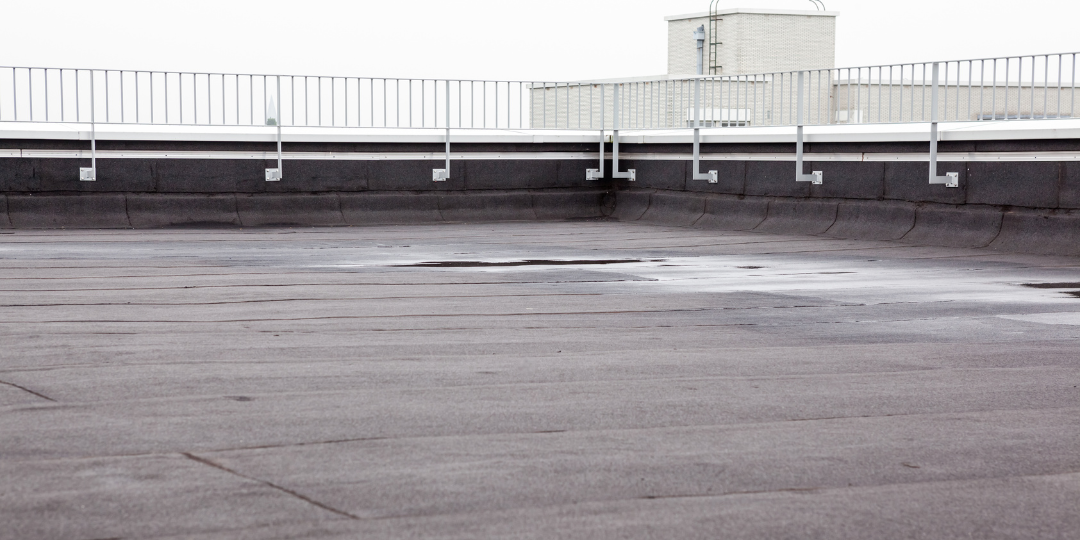Regular maintenance is essential for flat roofs to ensure their longevity and prevent potential problems. Neglecting flat roof maintenance can lead to numerous issues, including water damage, roof leaks, and even collapse.
One of the main reasons for maintaining a flat roof is to prevent water damage. Flat roofs are more susceptible to water pooling due to their horizontal surface, which can cause water to seep into the roofing material and ultimately damage the structure underneath. This can result in costly repairs and even compromise the integrity of the entire roof.
Regular maintenance helps to identify and fix any signs of damage or deterioration before they escalate into major issues. This includes identifying loose seams, damaged roofing material, or any nearby tree branches that may pose a risk to the roof’s surface. By addressing these problems promptly, you can prevent roof leaks and minimize the risk of more significant structural issues.
Regular flat roof maintenance also entails cleaning the roof surface from debris, such as leaves and organic matter that can accumulate and obstruct proper drainage. Clearing these obstructions ensures that water flows off the roof efficiently, reducing the chances of pooling and water damage.
Maintaining your flat roof is crucial and by conducting regular inspections, addressing signs of damage promptly, and ensuring proper drainage, you can keep your flat roof in good condition and extend its lifespan. In this blog, we discuss a few other ways you can maintain your flat roof, extending its life span immensely.
Cleaning the Gutters and Downspouts
Cleaning the gutters and downspouts of your flat roof is essential for maintaining proper drainage and preventing water damage. Here are the steps you should follow to ensure your gutters and downspouts are clear and functioning properly.
1. Remove Debris: Begin by removing any leaves, twigs, or other debris that may have accumulated in the gutters and downspouts. You can use a scoop or gloved hands to remove the debris and place it in a bag for disposal.
2. Flush with Water: Once the debris is removed, use a garden hose to flush the gutters and downspouts with water. This will help clear out any remaining dirt or small debris that may be stuck.
3. Inspect for Damage: While cleaning, it’s important to inspect the gutters and downspouts for any signs of damage, such as loose seams or cracks. If you notice any issues, it’s best to address them promptly to prevent further damage.
4. Repair if necessary: If you find any damage during your inspection, repair it as soon as possible. This may involve resealing seams, patching cracks, or replacing damaged sections. If you’re unsure how to do this yourself, call us today, we are here to help!
Inspecting the Roof for Damage and Leaks
Finding signs of damage and leaks from severe storms early on can prevent costly repairs in the future. Here are some important steps to follow for your regular flat roof maintenance.
1. Look for Lifted or Separated Seams: Check for any seams that may be coming apart or lifting. These can allow water to penetrate the roofing membrane and cause leaks. If you spot any lifted or separated seams, they should be resealed with roofing cement.
2. Check for Small Cracks: Cracks can develop over time due to weather exposure and aging. These cracks can let water seep into the roof structure and cause significant damage. If you find any small cracks, patch them with roofing cement to prevent further water penetration.
3. Examine for Blisters: Blisters are areas where bubbles have formed under the roofing membrane. These bubbles can weaken the roof, making it more susceptible to leaks. When inspecting your roof, look for any blisters and address them promptly by cutting out the blistered area and replacing it with a patch of the same roofing material.
4. Pay Attention to Areas of Discoloration: Discolored spots on your roof can indicate areas of moisture damage or potential leaks. Inspect these areas closely and caulk them if needed to prevent water from infiltrating the roof.
Remember, proactive measures can help keep your flat roof in optimal condition and protect your property from extreme weather damage.
Removing Debris from the Roof Surface
Removing debris from the roof surface is an important step in flat roof maintenance. Debris such as leaves, branches, and dirt can accumulate on your roof, causing damage and creating drainage issues. Here’s a step-by-step guide on how to remove debris from your roof surface:
1. Understand the Importance: Debris can block drainage pathways and prevent water from properly draining off the roof. This can lead to water pooling, which can cause structural damage and increase the risk of leaks. Regularly removing debris helps maintain the integrity of your flat roof.
2. Use a Broom or Leaf Blower: Start by using a broom or leaf blower to remove loose debris from the roof. Gently sweep or blow off leaves, sticks, and other debris. Pay close attention to areas around vents, skylights, and corners where debris tends to accumulate.
3. Watch for Signs of Leaks: While removing debris, keep an eye out for any signs of leaks or protruding debris that may have damaged the roofing material. Look for water stains, discoloration, or areas where the roof surface feels soft or spongy. If you notice any signs of damage, it’s important to address them promptly to prevent further issues.
Pinnacle Roofing Associates emphasizes the crucial role of regular maintenance in preserving the longevity and durability of flat roofs. Preventing water damage, leaks, and structural vulnerabilities requires timely interventions such as identifying and rectifying issues, clearing debris from gutters and roof surfaces, and consistent inspections. Find an issue? Do not stress! Contact us today for all your roofing repair needs.







